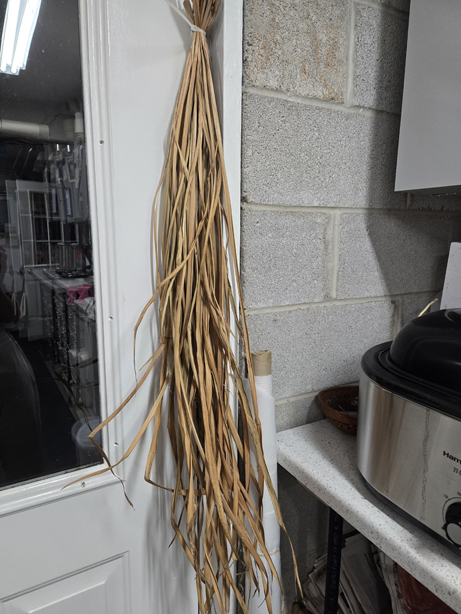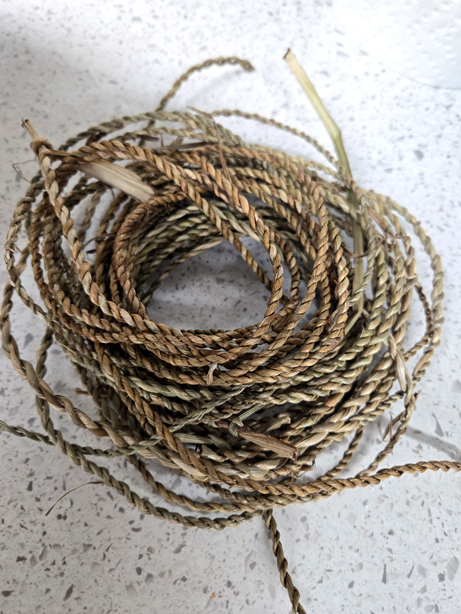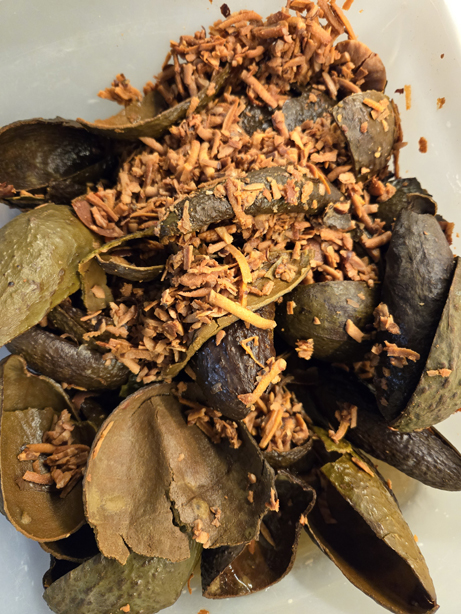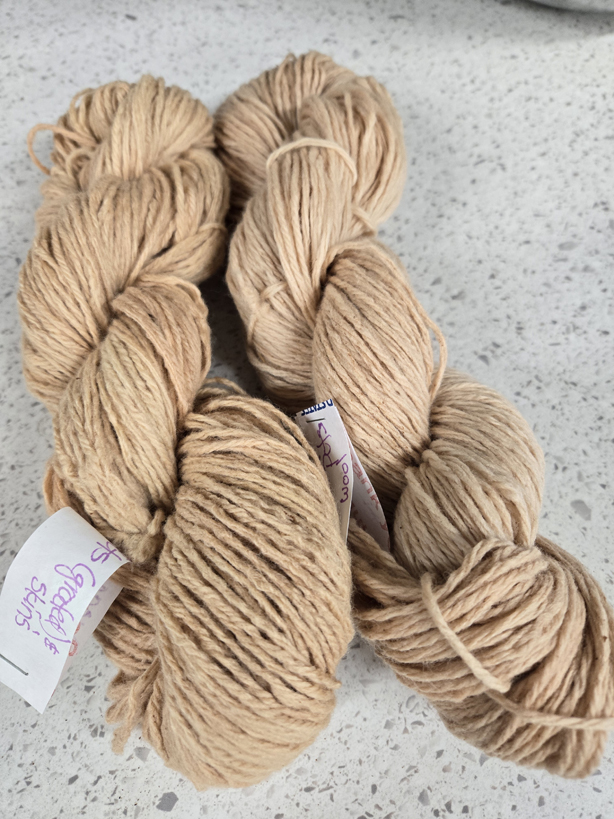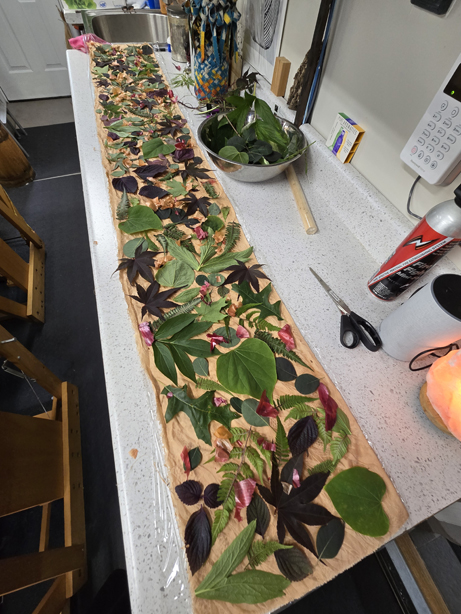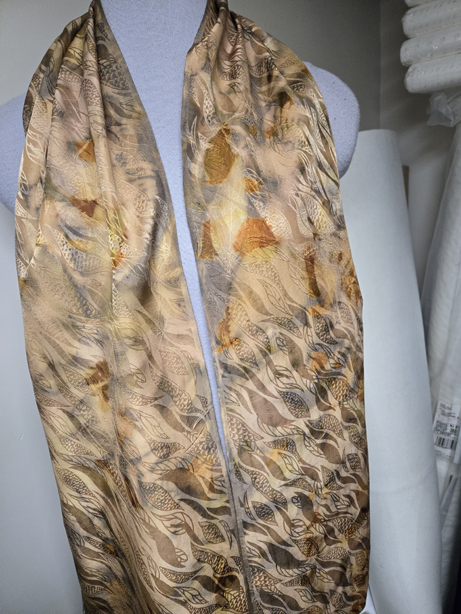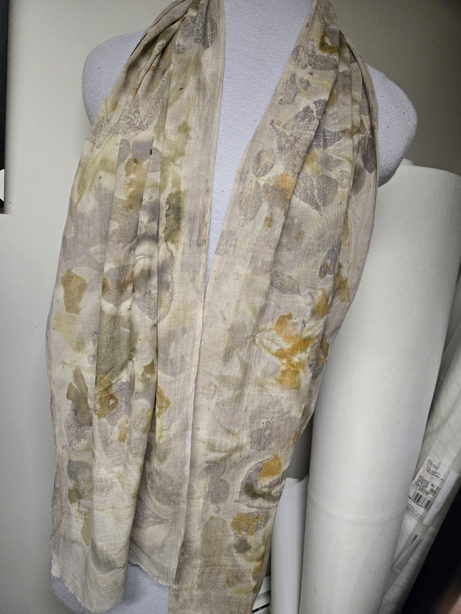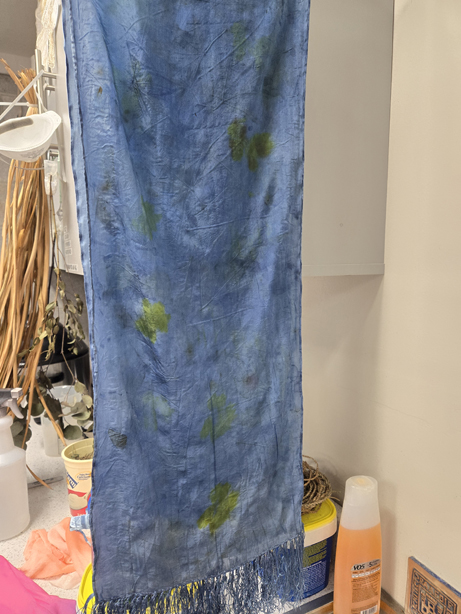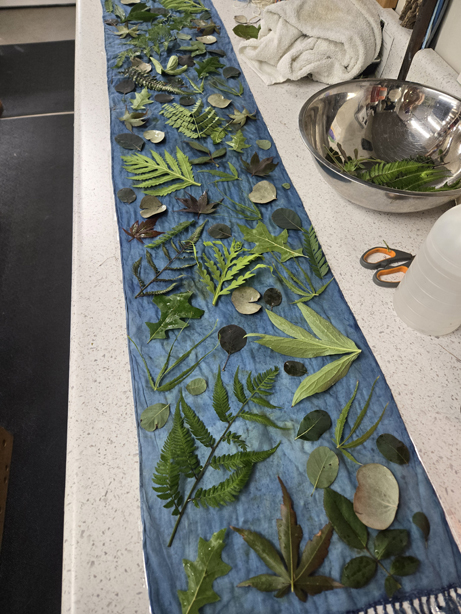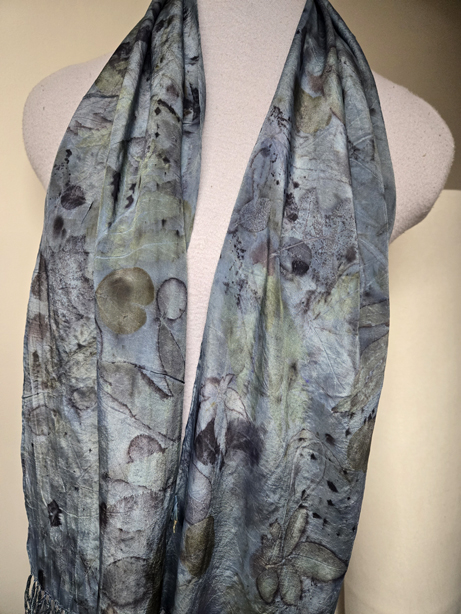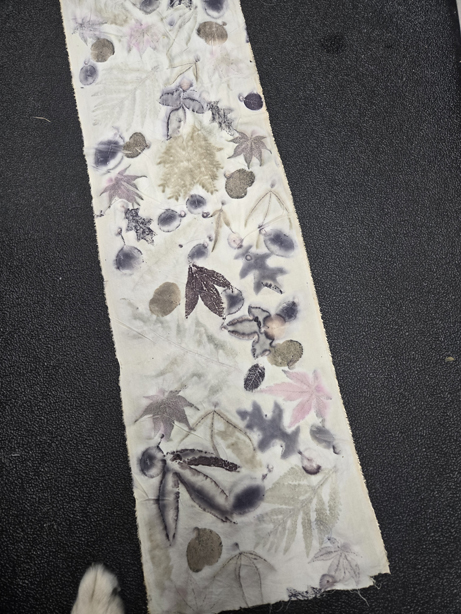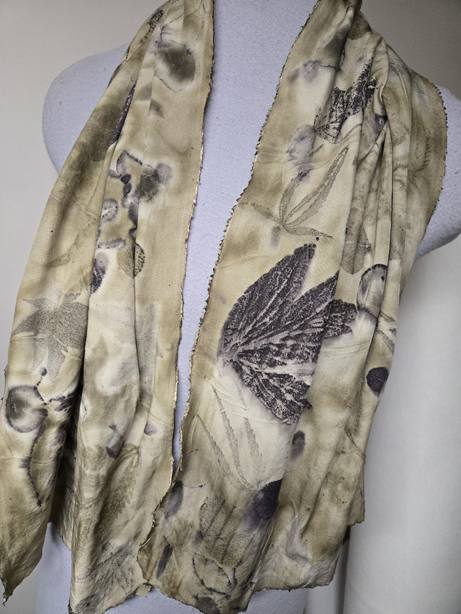I fell deep into a rabbit hole. It is a very cool thing, I feel a bit like Alice in Wonderland. Never fear, I’m not abandoning my weaving and garment making, but I’m beginning to develop a new additional love, one I hope can integrate into one I have expertise in (because I certainly don’t know what the heck I’m doing in this rabbit hole), but the journey so far would make Lewis Carroll happy!
First off, before I detail this past week’s adventures in plant land, after much sturm und drang, I am happy to finally announce that my daughter and I have completed the video documentary on my retrospective. My followers around the world get to experience the exhibit, a swan song to my long storied career. The link for the approx. 1 hour video is here.
In addition, I created another page in my Extras section of my website, that has all the garments and artworks shown in the exhibition with their full labels, details of technique and materials. You can look at that separately here, or follow the links in the show notes.
Meanwhile, I took a five day class at Peters Valley School of Craft, with one of my favorite teachers, Steven R. Carty. I took a class with him a couple of years ago in foraged basketry. This one was called Free-Form basketry, and used the materials at hand to provide inspiration for shape and size. I tried to keep things small, but they just wanted to be big and bold. We started with driftwood as the inspiration, and I made a very cool basket using flat reed and sea grass. It should have had more ribs according to my daughter, to be more stable, but that’s part of the learning process.
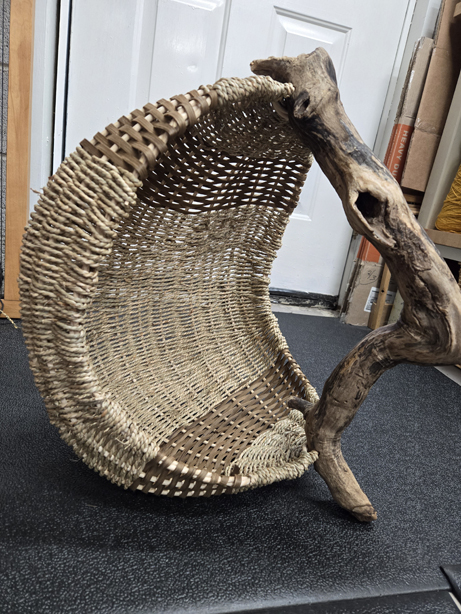
Next we made hoops of Oriental Bittersweet, located a short distance from Peters Valley (you can’t forage or harvest in federal lands, and Peters Valley is located in the Delaware National Recreation Area, overseen by the National Park Service). Anyway, I’ve been struggling to rip out all the Oriental Bittersweet in my yard, it is horrifically invasive, and even though it makes for great basketry materials, I’m still ripping it out. But Steven found some, and we made hoops that inspired the second basket. My hoop is still green, and I know it will shrink as it dries, but all of that is a learning curve and I just need to try and see what happens if…
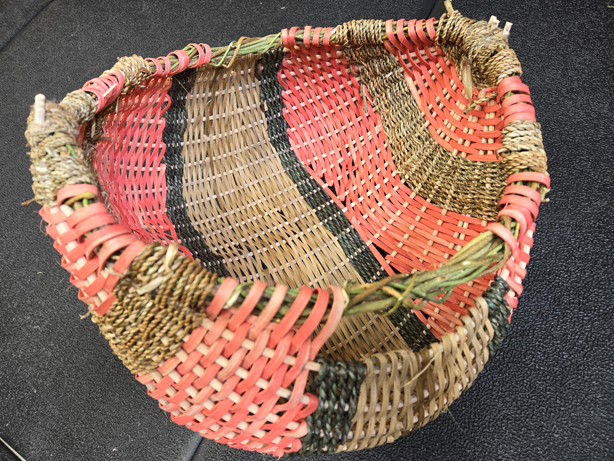
I also found out that you can dye reed with Rit Dye. Being cellulose, I should be able to dye it with Fiber Reactive Dyes, of which I have a ton, and I should be able to get at least tints using some of my natural dye experiments. Time will tell. A different rabbit hole…
The salmon flat reed was provided by the instructor, along with some teal dyed seagrass dug from a bin in the class.
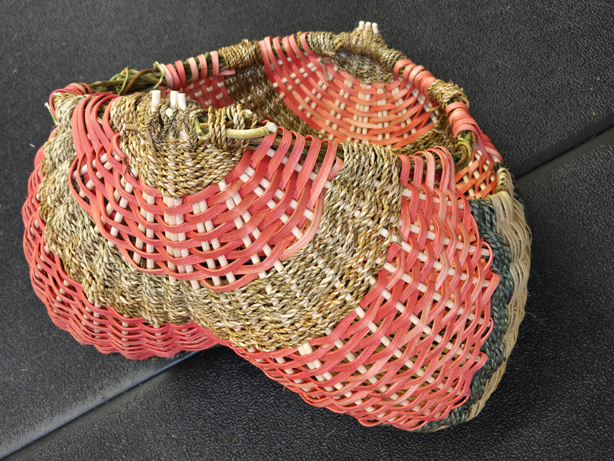
But the best part, is where I used all the cordage I’d been making over the last couple weeks, in the beginning part of the basket. This cordage is from the flag iris leaves (yes, also invasive, but I’m leaving them) in my garden.
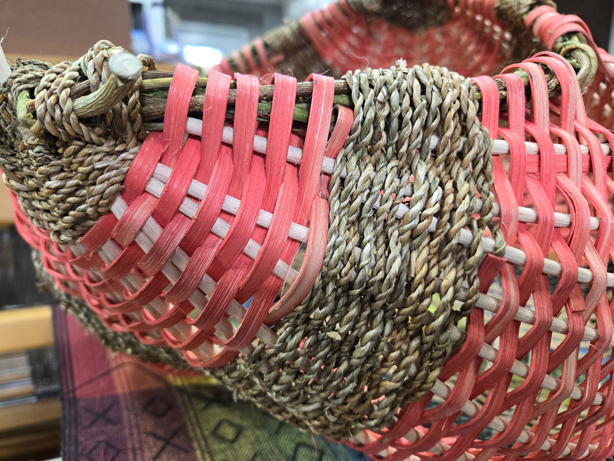
I’m slowly learning that July/August is time to start harvesting. I’m sort of looking for the late winter when gardening goes to sleep, at least here in the northeast. This has been an exhausting year of constant watering, weeding, and maintaining my newly planted 3000 native perennials/bushes/trees. I had a friend for lunch and then pizza for dinner yesterday, and we spent hours sitting outside talking, and watching the insect and bird activity. I’m seeing birds and bugs I’ve never seen before. There must be a hundred different types of bees alone, all over the blooms of my clethra. And we watched an honest to goodness monarch butterfly flit all around checking out the blooming milkweed and the Joe Pye weed, and I’m hoping will send out a signal to call all its friends. There was a gold finch perched in the tree over a section of clethra, sedges, and more Joe Pye. It is the state bird, but I’ve never seen one on my property. And of course I get an occasional glimpse of my resident praying mantis. Something I haven’t seen in 25 years. It is a miraculous site.
In the front yard, under the Kousa Dogwood I had an unknown volunteer pop us last year. Just a few plants, and they were kind of pretty, so I left them. A plant app told me it was Perilla. I didn’t think much about it, except that it wasn’t native. My Korean friend told me it is a staple in Korean cooking, used in place of lettuce leaf wraps. Huh… In my yard… I didn’t plant it.
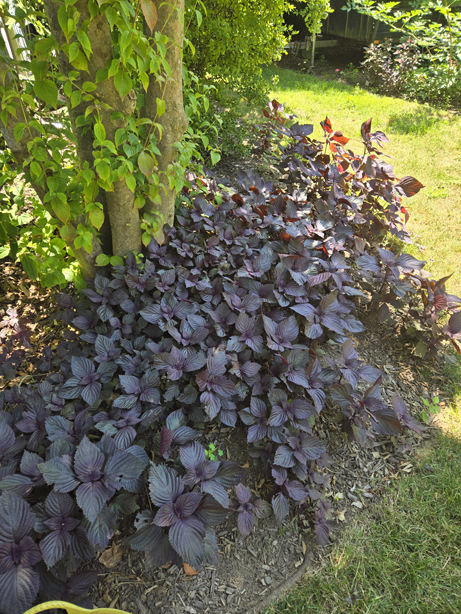
This spring, the few plants exploded into a nightmare. I ripped some out, but left some plants, because I had read in Rita Buchanan’s book, A Dyer’s Garden, still one of my favorites that it could substitute for Purple Basil, which she recommends as a dye plant. I had planted Purple Basil in my small dye garden, but only a half dozen plants, not the 18 she recommends in order to dye 4 ounces of wool. I have so much Perilla I’m picking it out of the grass in the front yard. So I picked a huge soup pot full,,, (about 85% Perilla and 15% purple leaf basil)
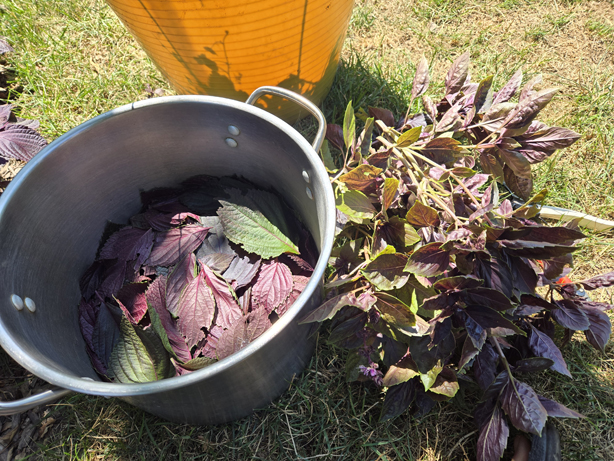
I added water and cooked for a couple hours on the induction burner I bought. Unfortunately this brand of burner, AMZChef, only has settings of 140 degrees, and then the next setting is 212 degrees, which is boiling. Nothing in between and no way to hold something at simmer. So I may have to look for a different model.
I do know that plants containing purples, have anthocyanins which are fugitive. Meaning they will wash out. Nevertheless, I put in two skeins of Aluminum Sulfate mordanted wool (the stuff I accidentally felted, see my last post), and a mordanted silk jacquard length of fabric.
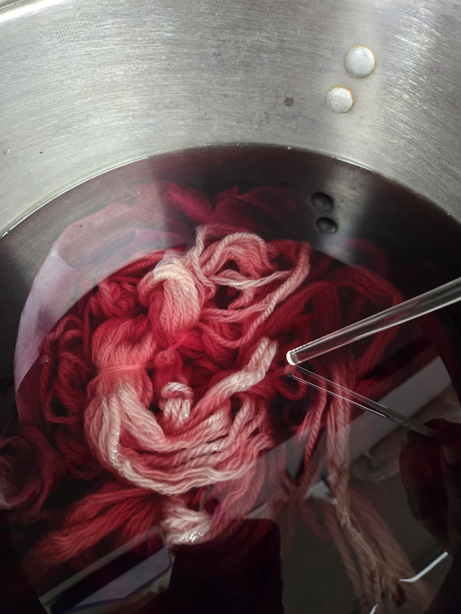
The soft pink was lovely, and as I stirred, I noticed the silk turning a gorgeous purple. The silk was glorious, and to my surprise, after things cooked for a couple hours, the wool came out grey green.
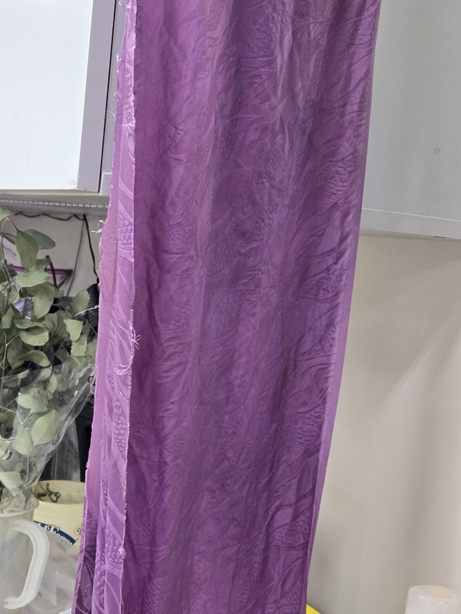
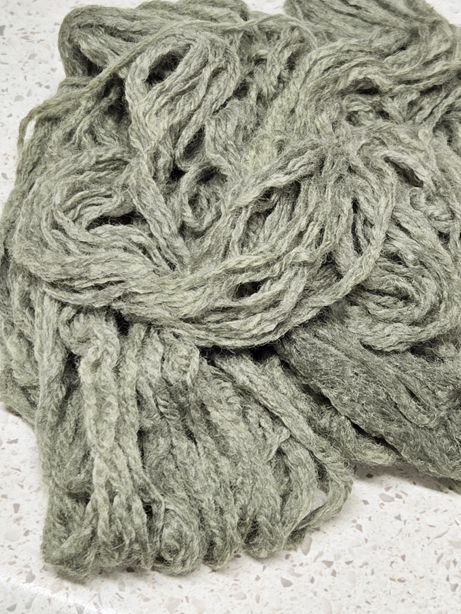
The glorious purple of course faded when I washed it to a pretty lavender.
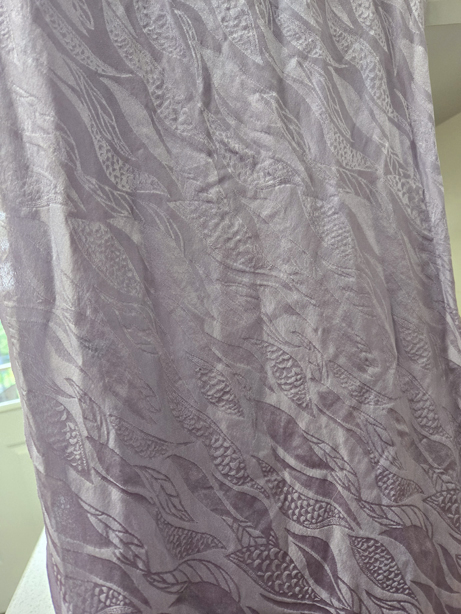
Rita talks about post dips, which I’m hearing more and more about, which change the PH of the thing you are dyeing. I tested the dyebath and it was a PH 7, sort of neutral, but I took her recommendation and dipped one of the wool skeins in ammonia, and to my complete shock, saw it turn bright green right before my eyes. I didn’t think you could get that color in natural dyes. The color held even after washing and drying. The other skein, I post dipped in vinegar, and the grey green color intensified, and remains pretty. Amazing results from a bunch of volunteer invasive plants. As an after thought, I also dipped the pretty lavender silk into ammonia and got a lovely shade of soft green. After washing and drying, it seems pretty stable.
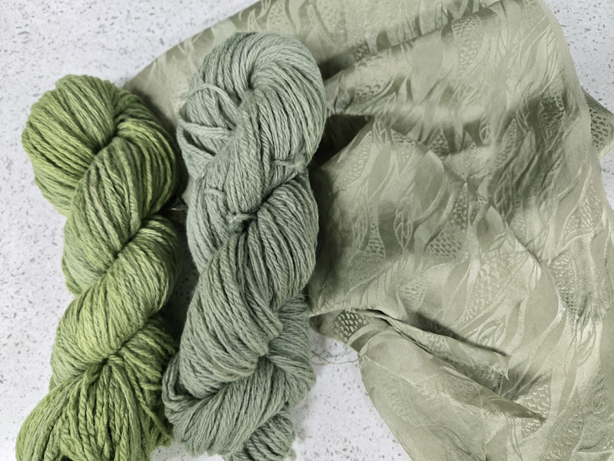
And of course I continue in the evenings to work on the cat appliqué quilt. This is block number 8, which bleeds onto the adjacent block, so I can’t finish sewing down the pieces on the right until the entire 9 blocks are assembled. Some of you are asking about the source for these quilt block kits, and they are from the 1990’s, created by Maggie Walker. You can still find some of them on eBay. The quilt is called My Cat’s Garden.
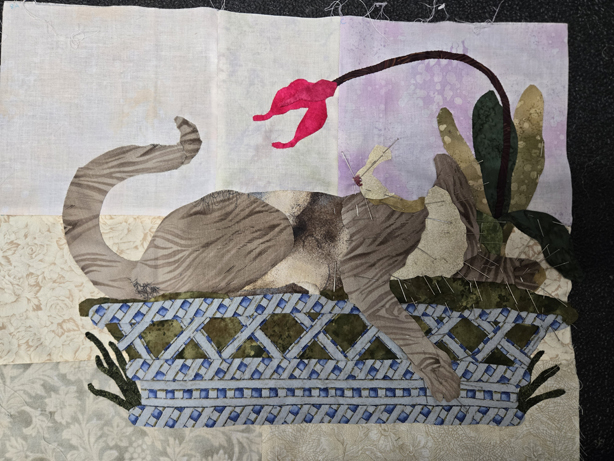
This has been a transformative year for me. A huge part of my life has come to an end, and a new one is just beginning. I feel like such a beginner, I want to learn so much, and am all over the place with information, books, social media sources, and classes. It will slowly all come together. Many many years ago, when my kids were small, and I hung out with a bunch of moms that were totally into alternative medicine, foods, organic options, all the things we thought were important for raising healthy children. We explored medicinal plants, and I had always thought that if I had been younger and had the time, I’d have loved to study with someone like David Winston, and really become an herbalist. One of the women in my basket class is doing just that. Studying herbal plants, creating medicines, and she turned me on to a couple of books she follows. Me, being a book-aholic, immediately ordered a handful from Amazon, which were waiting on my doorstep the last day of class.
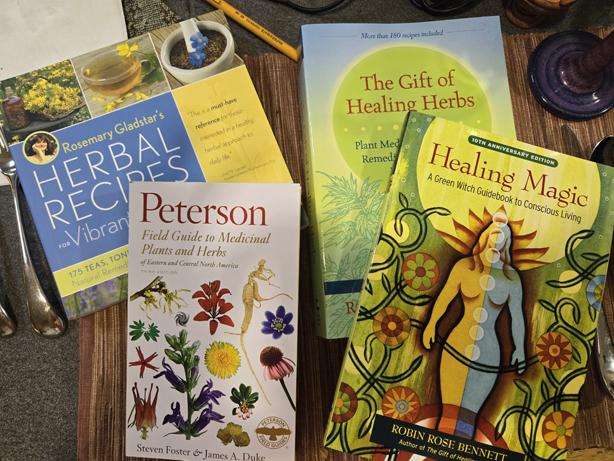
The more I find out, the more I want to know. Sort of like when I first learned to weave. That friend that came for lunch yesterday, I showed her how to weave on a four shaft Structo, and she was hooked. Then I showed her how to set up and weave on an inkle loom. She was really hooked. Already looked up the Inklette on Woolery. I suspect she has already ordered it. And a new weaver is born, and this old weaver has fallen into a new rabbit hole… And once I post this blog, I’m off to make another batch of pesto for the freezer…
Stay tuned…
